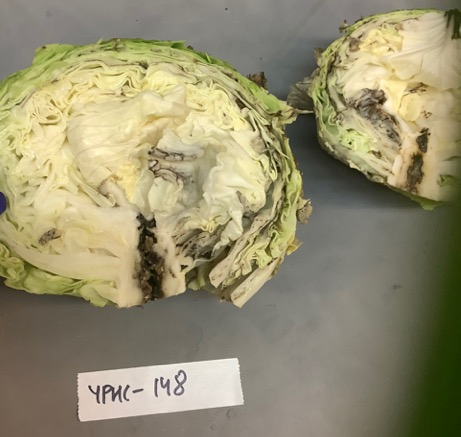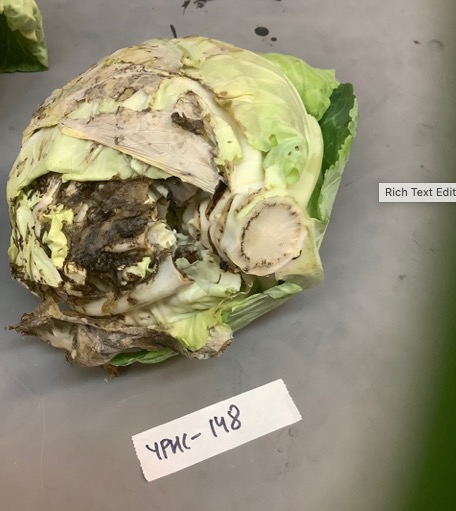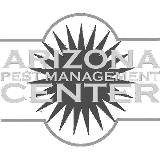The soft-rot bacterium, Erwinia carotovora subsp. carotovora (syn.= Pectobacterium carotovorum subsp. carotovorum), enters through growth cracks or wounds caused by cold temperatures, insects, other disease organisms, or by mechanical means. Under warm, humid conditions, uninjured tissue may become infected through natural openings. Prolonged moisture from rain or irrigation and mild temperatures encourage disease development. Insects, tools, rain, clothing, or affected plant tissue can spread the bacteria. The bacteria survive in soil and plant debris.
Symptoms appear as small, water-soaked areas and enlarge rapidly. Tissue becomes soft and mushy, and within a few days the affected plant part may collapse. An offensive odor usually is present.
Management:
Cultural:
- Set out plants in rows to allow good air drainage.
- Cultivate carefully to minimize injuring plants.
- Control frequency and source of irrigation water.Avoid frequent irrigation during head development. Time irrigation to allow the head to dry rapidly. Avoid stagnant water sources.
- Clean and spray storage walls and floors with copper sulfate solution (1 lb/5 gal water). Bactericides such as Clorox, Lysol, and quaternary ammonium products also are effective.
- In storage, use a buffering material such as straw or paper to prevent injury to the heads.
- Keep storage house humidity between 90% and 95% and the temperature between 32°F and 39°F.
Chemical control
· Cueva at 0.5 to 2 gal/100 gal water on 7- to 10-day intervals. May be applied on the day of harvest. 4-hr reentry.
- Cease at 3 to 6 quarts in 100 gal water. For greenhouse plants only. Preharvest interval is 0 days. 4-hr reentry.







